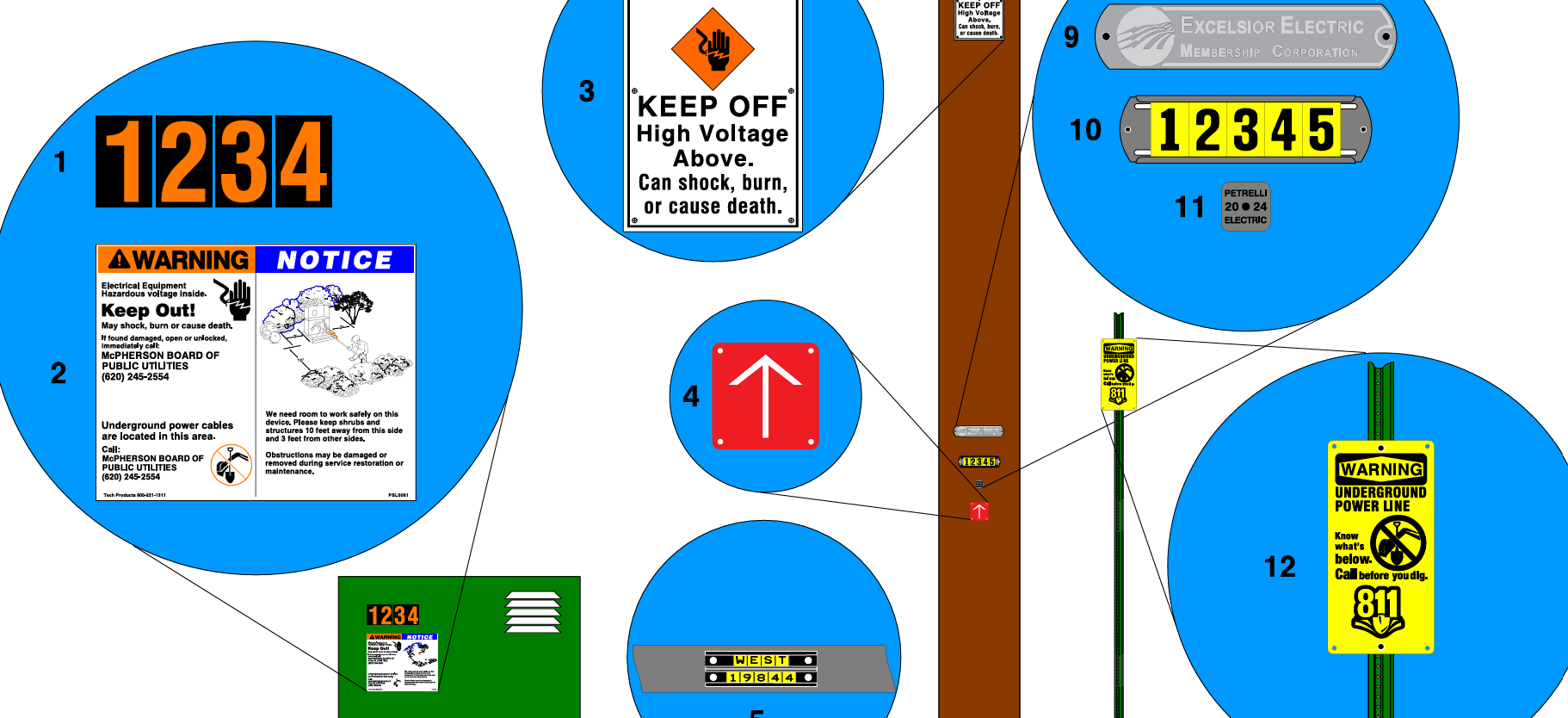What is Smart Grid Explained
By William Conklin, Associate Editor

Download Our OSHA 4475 Fact Sheet – Being Aware of Arc Flash Hazards

- Identify root causes of arc flash incidents and contributing conditions
- Apply prevention strategies including LOTO, PPE, and testing protocols
- Understand OSHA requirements for training and equipment maintenance
A Smart Grid is an electricity network enhanced with sensors, IoT, or communication technology that enables two-way data flow, real-time monitoring, demand response, renewable energy integration, and energy efficiency for a reliable, resilient, and green power system.
What is Smart Grid?
A Smart Grid is an electricity network that uses digital communications, sensors, and automation to improve efficiency, reliability, and sustainability.
✅ Enables two-way flow of electricity and information for monitoring and control
✅ Integrates renewable energy and supports demand response programs
✅ Improves reliability with advanced metering, storage, and consumer participation
Why Smart Grid Matters
Smart grid technology offers a transformative solution to the growing demands on our electricity network. By modernizing the power grid, integrating renewable energy sources, and leveraging digital technologies such as AI and predictive analytics, smart grids enhance energy efficiency, mitigate environmental impacts, and foster a more sustainable energy future. With adoption accelerating in North America, Europe, and Asia, intelligent networks are becoming the backbone of modern energy policy. Real-world examples include California’s demand response programs, which have cut peak load by over 10%, and Europe’s large-scale rollouts of advanced metering infrastructure, which have empowered millions of households to monitor and manage their energy use. Initiatives in grid modernization highlight how utilities are re-shaping infrastructure to meet rising demand while ensuring sustainability.
Modern electricity grids are becoming increasingly dynamic as they adapt to rising energy demand and the integration of renewable energy sources. Grid operators rely on advanced monitoring and automation to balance supply and demand, preventing instability and reducing the risk of widespread power outages.
Electricity Today T&D Magazine Subscribe for FREE

- Timely insights from industry experts
- Practical solutions T&D engineers
- Free access to every issue
Why Smart Grid Matters
Smart grid technology offers a transformative solution to the growing demands on our electricity network. By modernizing the power grid, integrating renewable energy sources, and leveraging digital technologies such as AI and predictive analytics, smart grids enhance energy efficiency, mitigate environmental impacts, and foster a more sustainable energy future. With adoption accelerating in North America, Europe, and Asia, smart grids are becoming the backbone of modern energy policy. Real-world examples include California’s demand response programs, which have cut peak load by over 10%, and Europe’s large-scale rollouts of advanced metering infrastructure, which have empowered millions of households to monitor and manage their energy use.
Intelligent T&D Systems
At the core of the Intelligent T&D system technology is the integration of digital communication with the traditional power grid, which remained largely unchanged for decades. This integration enables real-time monitoring and control of electricity flow, promoting modernization and increased efficiency. Smart grids also reduce reliance on fossil fuels by incorporating renewable energy sources, such as solar and wind. In Spain, the widespread integration of wind power, accounting for more than 20% of national generation, has only been possible through the flexibility of intelligent networks.
One of the essential components is Advanced Metering Infrastructure (AMI). AMI includes smart meters that collect detailed consumption data and transmit it back to utilities, allowing more accurate pricing, load forecasting, and improved customer engagement. In Ontario, Canada, over 4 million smart meters have been deployed, resulting in cost savings and enhanced outage management.
Another pillar is demand response, which adjusts consumption in response to fluctuations in supply. Real-time data allows utilities to balance load, preventing outages, reducing strain on infrastructure, and lowering costs. For example, demand response programs in Texas reduced system stress during heatwaves, avoiding blackouts. These programs are reinforced by coordinated automation schemes that improve grid stability and streamline utility operations.
Smart Grid Technology Comparison
| Technology | Role in Smart Grid | Key Benefits | Challenges |
|---|---|---|---|
| Advanced Metering Infrastructure (AMI) | Collects and transmits detailed consumption data via smart meters | Accurate billing, outage detection, consumer engagement | High installation cost, data privacy concerns |
| Demand Response Systems | Adjusts electricity use in response to supply and demand fluctuations | Balances load, prevents outages, lowers costs | Requires consumer participation, complex program management |
| Renewable Integration | Incorporates solar, wind, and distributed generation into the grid | Reduces emissions, increases sustainability, diversifies supply | Intermittency, storage needs, grid balancing |
| Energy Storage Systems | Stores excess electricity for later use (batteries, pumped hydro) | Improves reliability, stabilizes grid, supports renewables | High capital cost, limited lifespan for batteries |
| Electric Vehicles (EVs) & V2G | Adds load through charging but can also return power to grid | Mobile storage, supports decarbonization, demand flexibility | Infrastructure demand, peak load risk, charging coordination |
| Microgrids | Localized grids that can operate independently or with main grid | Increases resilience, supports distributed renewables | Cost of deployment, regulatory complexity |
| SCADA & Grid Automation | Provides real-time monitoring, control, and automation | Faster fault detection, improved efficiency, predictive maintenance | Cybersecurity risks, need for robust communication |
| Communication Networks (HAN, NAN, WAN) | Enables data exchange between devices, consumers, and utilities | Two-way data flow, interoperability, real-time visibility | Standardization, latency, cybersecurity concerns |
| Cybersecurity Frameworks | Protects communication and control systems from attacks | Safeguards privacy, maintains trust, ensures reliability | Constantly evolving threats, need for investment |
| Data Analytics & AI | Analyzes big data from grid operations for insights and predictions | Predictive maintenance, optimized performance, improved planning | Data management challenges, reliance on advanced infrastructure |
Integration of Renewables and Storage
The integration of renewable energy is central to the smart grid concept. Distributed generation, including solar panels and wind turbines, requires flexible infrastructure to manage the intermittency of these energy sources. Energy storage systems, from large-scale lithium-ion batteries to pumped hydro, smooth fluctuations and increase reliability. In Australia, the Hornsdale Power Reserve battery project has reduced grid costs by tens of millions of dollars annually, showing the financial and technical potential of smart storage. Utilities also rely on improved sensor technology to track renewable energy variability in real-time and maintain balance.
Electric Vehicles and Microgrids
Electric vehicles (EVs) are both a challenge and an opportunity for intelligent networks. As EV adoption grows, charging demand surges. Smart grids intelligently schedule charging to avoid peak overload, while also enabling vehicle-to-grid (V2G) services, where EVs act as mobile storage units feeding power back to the grid.
Microgrids—localized power networks—further enhance resilience. During Hurricane Sandy in the U.S., microgrids kept hospitals and emergency centers powered when the main grid failed. Intelligent networks enable these microgrids to seamlessly integrate renewable energy sources and operate independently or in sync with larger power networks. Enhanced smart substation systems are crucial to this integration, ensuring seamless coordination between distributed and central power sources.
Communication Infrastructure and Standards
Smart grids rely on robust communication networks: Home Area Networks (HAN), Neighbourhood Area Networks (NAN), and Wide Area Networks (WAN). Standards such as IEC 61850 and IEEE 2030 ensure interoperability between devices, while cybersecurity frameworks safeguard against attacks. Reliable communication is as critical as the power lines themselves, ensuring fast, secure, and accurate control. Utilities increasingly depend on SCADA architecture and smart grid communication platforms to maintain visibility and responsiveness across vast power systems.
Sign Up for Electricity Forum’s Smart Grid Newsletter
Stay informed with our FREE Smart Grid Newsletter — get the latest news, breakthrough technologies, and expert insights, delivered straight to your inbox.
Costs, Benefits, and Business Models
Deploying smart grids involves significant upfront investment—billions globally in infrastructure upgrades, smart meters, and control systems. Yet long-term savings in efficiency, reduced outages, and lower emissions deliver strong returns. In the U.S., the DOE estimates that intelligent networks could reduce costs by $130 billion annually through increased efficiency and avoided outages.
They also empower “prosumers”, consumers who generate their own power through rooftop solar or small wind systems and sell it back to the grid. This new market model creates financial incentives, encourages the development of distributed energy, and fosters resilience. Data from smart grid monitoring and data analytics further supports business models by giving utilities the insights needed to optimize pricing and capacity.
Challenges and Barriers
Despite the benefits, challenges remain. High initial costs, privacy concerns, and cybersecurity risks are obstacles to adoption. Regulatory frameworks vary across countries, and establishing consistent industry standards remains a work in progress. Cyber risks are particularly pressing, with reports like the DHS/FBI alert underscoring vulnerabilities. Strategies such as a grid cybersecurity strategy and SCADA cybersecurity provide essential protections. Governments and utilities must work together to overcome these barriers while maintaining public trust and ensuring equitable access.
The Future of Smart Grids
Looking ahead, technologies like artificial intelligence, machine learning, edge computing, and blockchain will further enhance smart grids. Predictive analytics will anticipate equipment failures, while blockchain could enable transparent peer-to-peer energy trading. As climate goals push for decarbonization, intelligent networks will play a central role in integrating renewables, electrifying transportation, and creating sustainable, resilient communities. Utilities are also utilizing SCADA integration and SCADA monitoring to develop smarter, more autonomous systems that can adapt to future needs.
Frequently Asked Questions
What are the three main features?
-
Advanced Metering Infrastructure (AMI) for real-time monitoring
-
Integration of renewable energy and storage
-
Demand response for load balancing
What are the main benefits?
Improved reliability, lower costs, reduced emissions, consumer participation, and enhanced energy security.
How secure are they?
They use encryption, firewalls, and cybersecurity standards, but risks remain. Continuous upgrades are essential.
How much does a smart grid cost?
Costs vary by region, but large-scale deployments run into billions. However, long-term savings outweigh initial expenses.
What role do consumers play?
Consumers become active participants, managing demand, generating renewable energy, and even selling power back to the grid.
Conclusion
By integrating digital communication, renewable energy, advanced metering, storage, and consumer participation, intelligent networks offer a path toward a reliable, efficient, and sustainable power future. Although challenges remain, global investment and innovation are making smart networks the foundation for tomorrow’s electricity networks. For further learning, explore resources such as how utilities can keep the lights on, how SCADA works, or our overview of what is SCADA.
Related Articles











